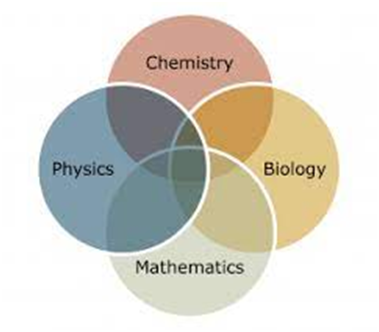👽∷
GENE INTERACTION
Definition:-
The
phenomenon of two or more genes affecting the expression of each other in
various ways in the development of a single character of an organism is known
as gene interaction.
Most of the characters
of living organisms are controlled/influence/governed by a collaboration of
several different genes. Mendel and other workers assumed that characters are
governed by single genes but later it was discovered that many characters are governed
by two or more genes.
Types of Gene Interactions
Gene interaction can be classified as:-
01 Allelic/non-epistatic gene
interaction: This
type of interaction gives the classical ratio of 3:1 or 9:3:3:1.
02 Non-allelic/epistatic gene
interaction: In this type of gene interaction of
genes located on same or different chromosomes interact with each other for
their expression. Discovery of non-allelic gene interaction has been made after
Mendel and can be understood by studying phenotypic trait or gene.
Gene interaction can be of following
types.
Complementary Gene Interaction
1. Involves of two pair of non-allelic
genes.
2. When dominant forms of both the genes involved in complementary gene interaction are alone have same phenotypic expression
But, if they are present in combination, yield different phenotypic effect.
4. Flower color in garden pea follows
this type of gene interaction.
We have
considered garden pea for the explanation of this type of gene interaction, in which
it was noted for the first time. Two different varieties of garden pea produce
same color flowers-whit. But on crossing they yield purple color flowers. Again
in F2, 9 purple: 7 white segregation was observed.
Supplementary Gene Interaction
1.
Involves two pair of non-allelic genes.
2.
Affect the same character.
3.
One of the dominant genes has visible effect itself.
4. Second dominant genes expresses itself
when supplemented by the other dominant genes of a pair.
5. Coat color (black, albino and agouti)
of mice flowers supplementary gene interaction.
In mice, black coat color is
monogenitically dominant over albino and agouti. The offspring resulting from
the cross between black and albino has agouti coat color.
F2 generation
shows segregation in the ratio 9 agouti: 3 black: 4 albino. This behavior is based
on ratio of dihybrid cross, so the trait must be governed by two pairs of
genes.
Suppose,
gene C is essential for the development of black coat color, so present in
black mice and absent in albino mice. Albino mice contains only gene A, so
produce albino phenotype.
But, when
gene A is present along with gene C, produces agouti phenotype. Both the gene
in recessive form produce albino phenotype.
So the cross will be as follows:
|
Cross
between |
F1 |
F2 |
|
CCaa X ccAAblack X albino |
CcAa
agouti |
9
agouti : 3black : 4
albino |
Incomplete Dominance
Incomplete dominance
is a form of intermediate inheritance in which one allele for a specific trait
is not completely expressed over its paired allele. This results in a third
phenotype in which the expressed physical trait is a combination of the
phenotypes of both alleles. Unlike complete dominance inheritance, one allele
does not dominate or mask the other.
Incomplete dominance occurs in the polygenic
inheritance of traits such as eye color and skin color.
Discovery if no allelic gene interaction
has been made after Mendel and can be understood by studying phenotypic trait
of gen.





0 Comments